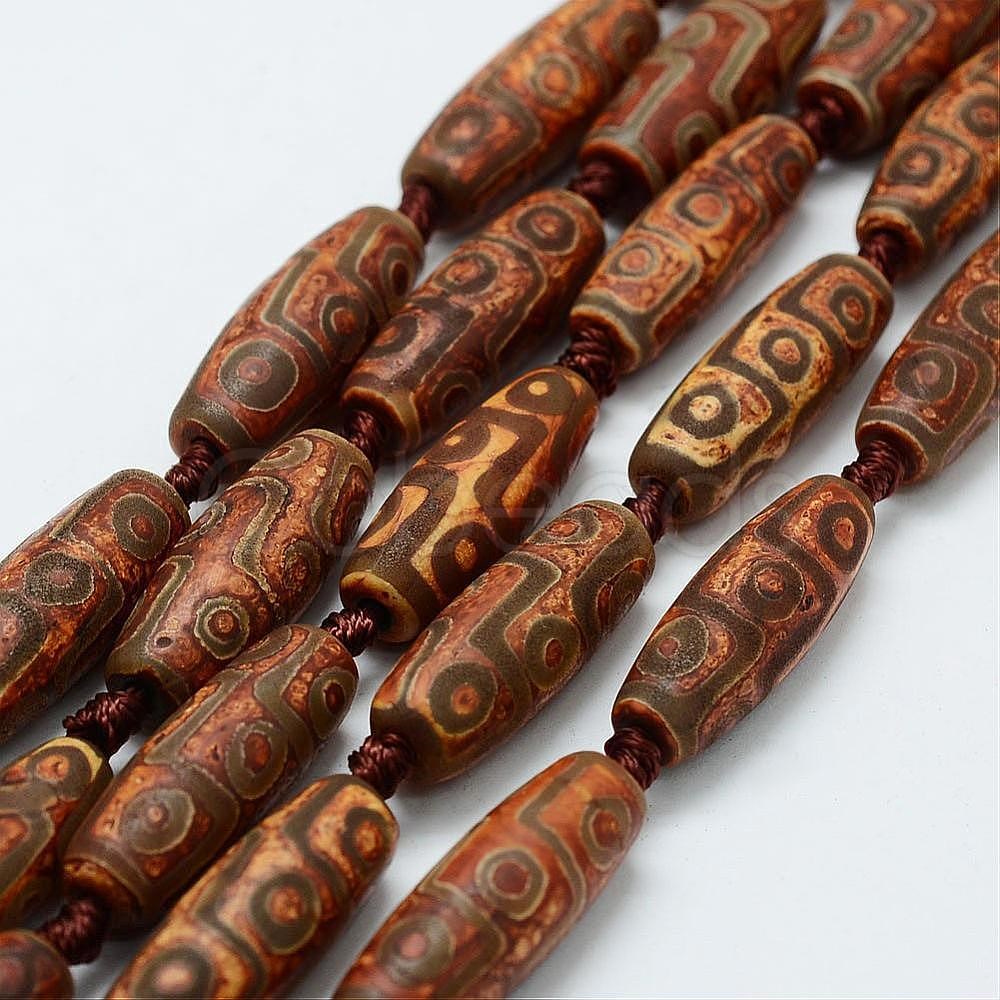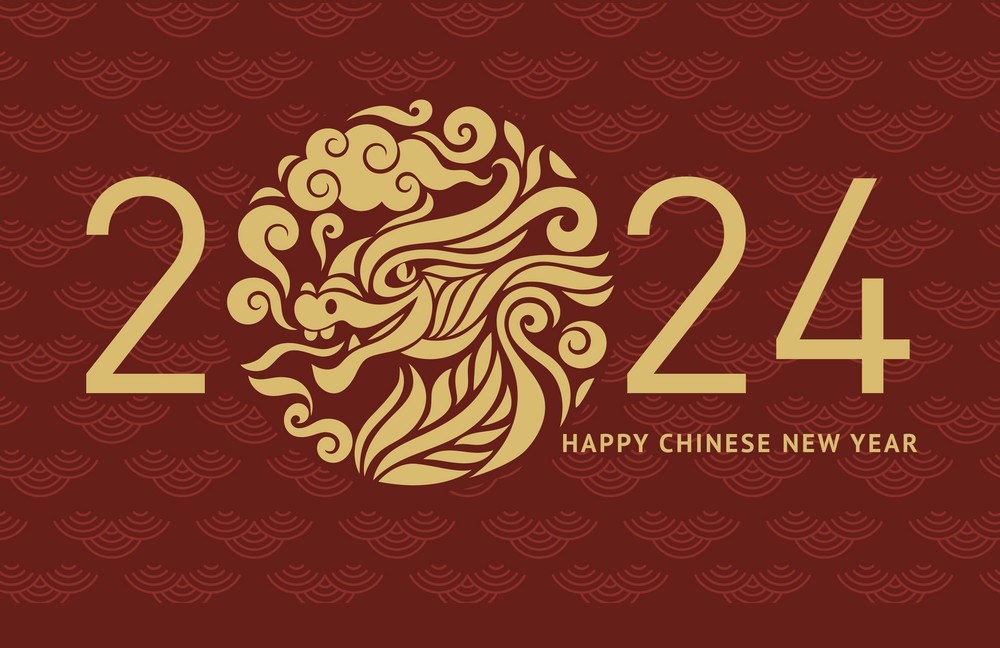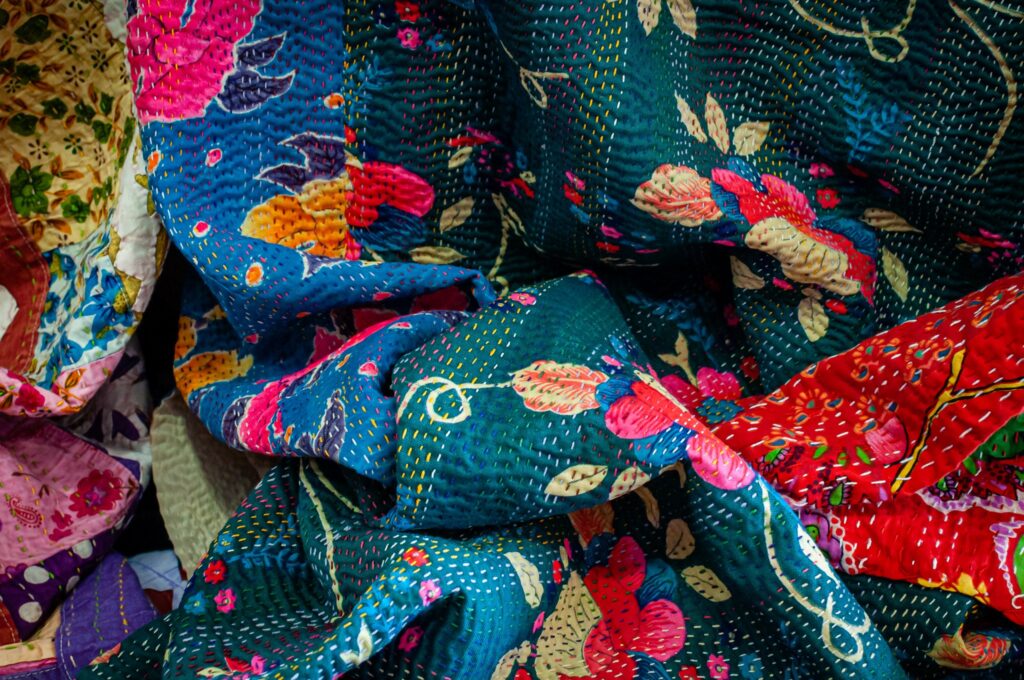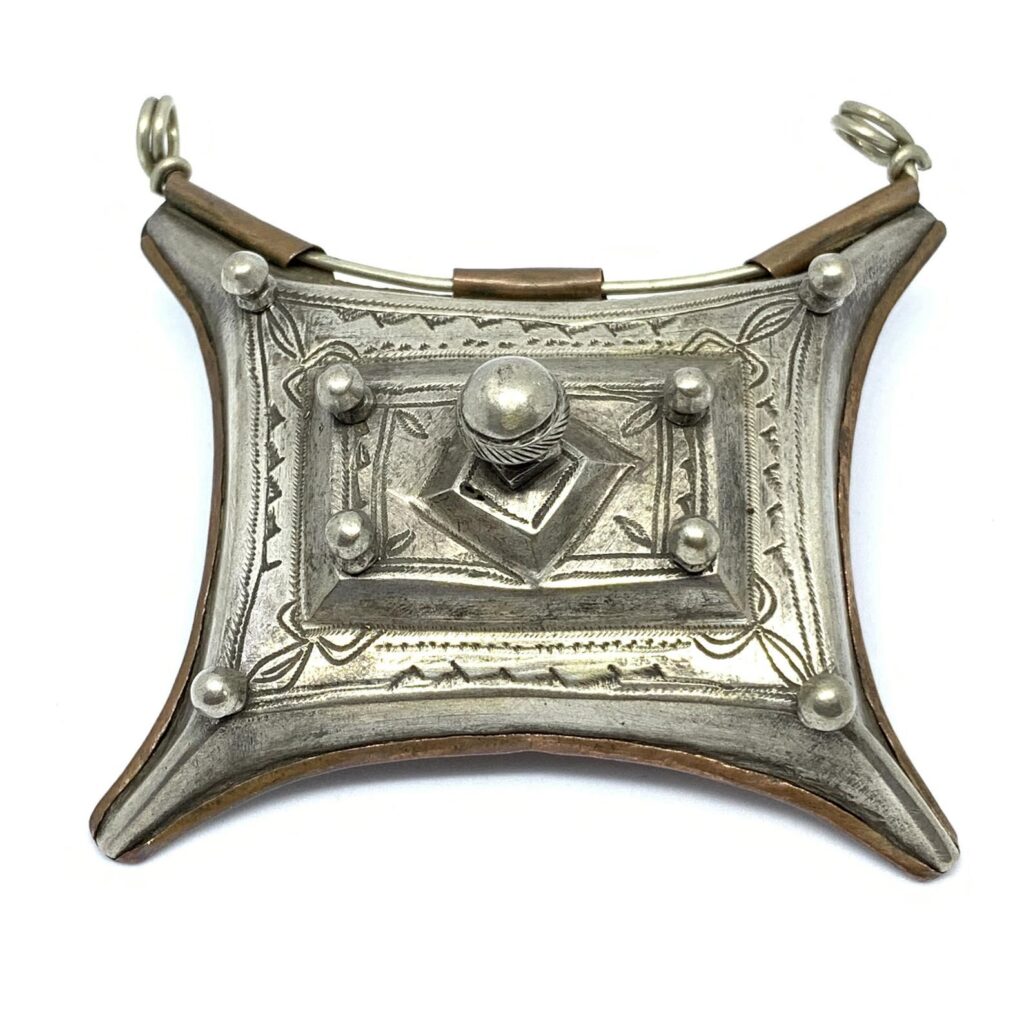
Tibet: all the secrets of the Dzi Bead
A dzi bead (Tibetan: གཟི།; pronounced “zee”; alternative spelling: gzi) a type of agate bead found in the Himalayan regions including Tibet, Bhutan, and Ladakh.
The meaning of the Tibetan word “dzi” translates to “shine, brightness, clearness, splendor”. In mainland China and Taiwan they are widely known by the name tīan zhū”, which is given by Taiwanese collectors and means “heaven’s bead” in Mandarin.
Traditionally they are worn as part of a traditional Tibetan necklace, usually flanked with coral. Sometimes they are also worn with amber and turquoise beads.
The bead is considered to provide positive spiritual benefits to the wearer. These beads are generally prized as protective amulets and are sometimes grounded and used in traditional Tibetan medicine. The number of “eyes”, or circular designs on the stone, is considered significant when considering the importance of a dzi. The symbolic meaning of dzi beads are sometimes based on the number and arrangement of the dots.

Dzi beads are made from agate, and may have decorative symbols composed of circles, ovals, squares, waves or zig zags, stripes, lines, diamonds, dots, and various other archetypal and symbolic patterns. Colors mainly range from brown to black, with the pattern usually in ivory white. Dzi beads can appear in different colours, shapes, and sizes; the surface is usually smooth and waxy, presumably resulting from wear over a long period of time.
Dzi stones made their first appearance between 2000 and 1000 BC, in ancient India: a few hundred thousand were supposedly brought back by Tibetan soldiers from Persia. The malicious effect of the “evil eye” was taken very seriously by these people. Dzi were considered to counteract the evil eye. The artisans who made the dzi created amulets with “eyes” on them as a “fight fire with fire” form of protection.
Artisans used agate as the base stone, and then embellished the beads lines and shapes using ancient methods that remain mysterious.

Although the geographic origin of dzi beads is uncertain, it is accepted that they are now called “Tibetan beads”, just like “Tibetan coral”, which also came to Tibet from elsewhere. Tibetans cherish these beads and consider them hereditary gems. In this way they have survived thousands of years, being worn by hundreds of individual people. Dzi are found primarily in Tibet, but also in neighbouring Bhutan, Nepal, Ladakh and Sikki.
The most highly prized dzi beads are the ancient “pure dzi”.










